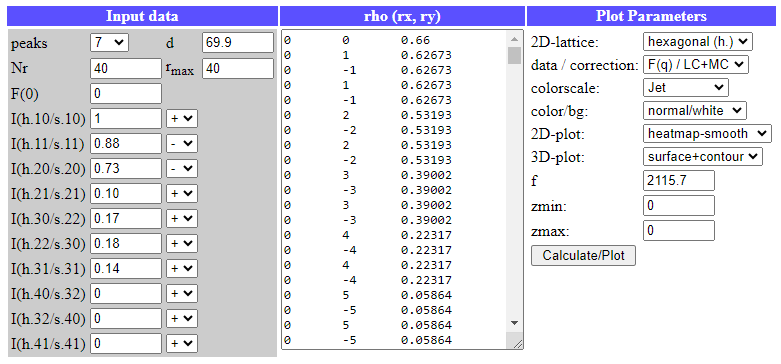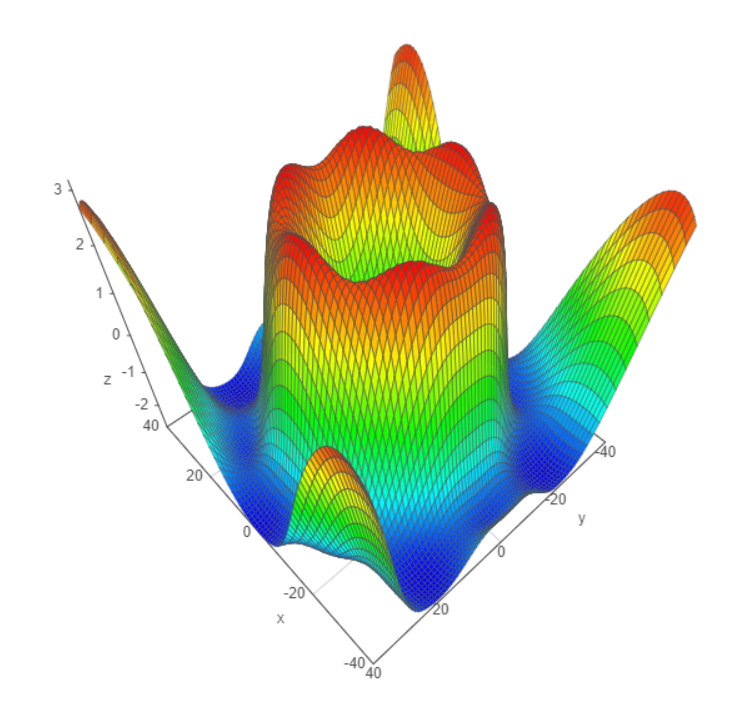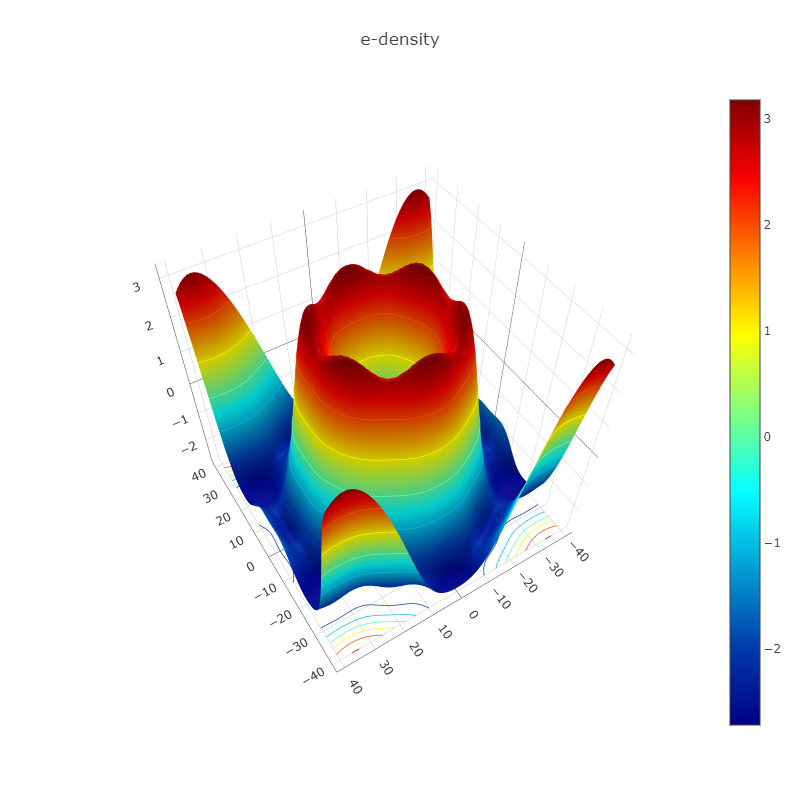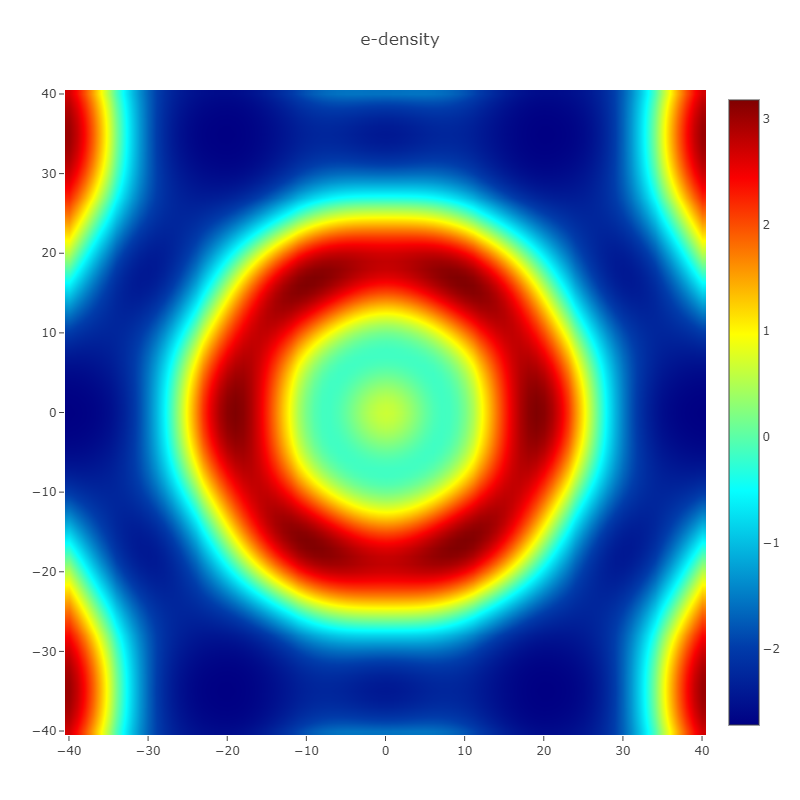Calculation of the Electron Density of a Hexagonal Unit Cell from Diffraction Data (Example).
As an example, the electron density of a hexagonal unit cell is calculated from (X-ray) diffraction data. We take the experimental data from the paper
Harper et al. 2001, Biophysical Journal, 81, 2693–2706,
for fully hydrated aqueous dispersions of the phospholipid DEPE (Di-“elaidoyl”-phosphatidyl-ethanolamine) at 85°C. The first 7 diffraction peaks of the hexagonal phase are given with
1.00 / 0.88 / 0.73 / 0.10 / 0.17 / 0.18 / 0.14, which are the Lorentz- and multiplicity-corrected amplitudes with the signs +/-/-/+/+/+/+. The hexagonal lattice spacing of the lipid at 85°C is 69.9 A.
The parameters for the calculation are entered as input into the
Electron density calculator for 2D-hexagonal or 2D-square lattices as shown below:
The results (e-density of the hexagonal phase) are plotted in 3D and 2D:
Author: M.Kriechbaum, TU-Graz
(2020), e-mail:
manfred.kriechbaum@tugraz.at




